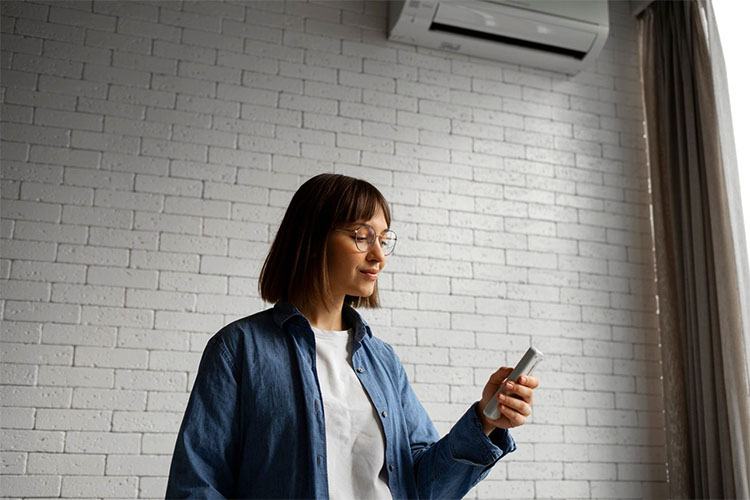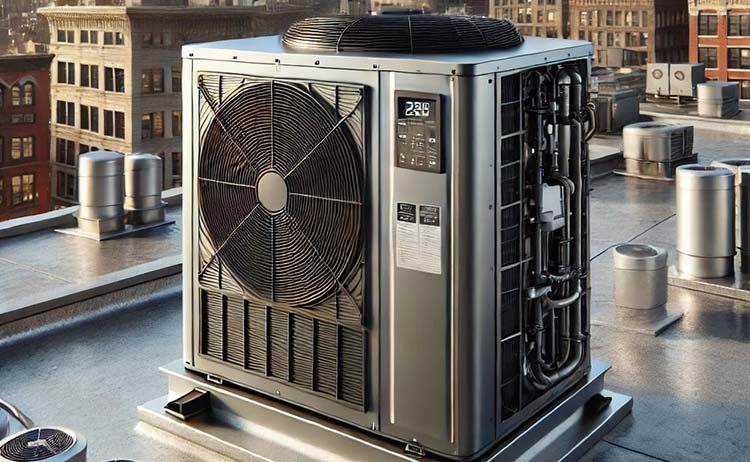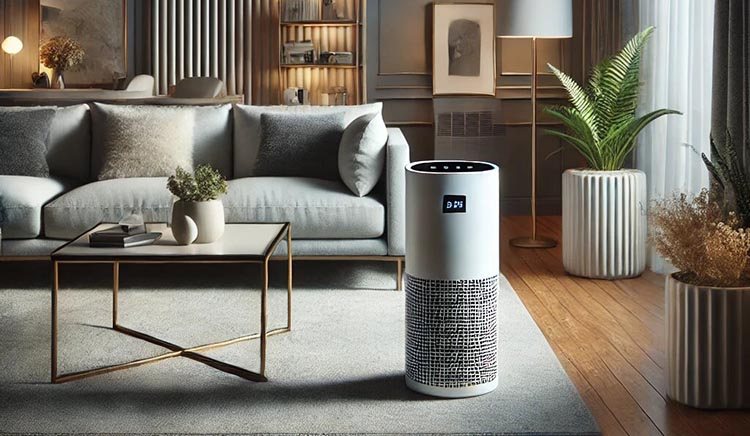Contents
Indoor air quality (IAQ) is a critical yet frequently neglected component of our living and working environments, making it essential to understand how to measure indoor air quality effectively.
Substandard IAQ can contribute to a variety of health issues and adversely impact overall well-being.
It is essential to understand the factors that influence air quality, identify the common pollutants present, and learn how to measure and improve the indoor air environment to ensure a healthy space.
This guide aims to elucidate the intricacies of indoor air quality, equipping you with the knowledge necessary to take proactive measures for creating a cleaner and safer atmosphere.
What Is Indoor Air Quality?
Indoor air quality (IAQ) pertains to the condition of air within buildings and structures, which can have a substantial impact on the health and comfort of occupants.
It is influenced by various factors, including the presence of air pollutants such as volatile organic compounds (VOCs), particulate matter like PM2.5 and PM10, and levels of carbon dioxide.
A comprehensive understanding of indoor air quality is essential for promoting a healthy indoor environment, as poor IAQ can result in numerous health effects, including respiratory issues and the exacerbation of conditions such as asthma.
Conducting regular indoor air testing is crucial for assessing these conditions and identifying sources of air contaminants.
Why Is Measuring Indoor Air Quality Important?
Measuring indoor air quality is essential for ensuring a safe and healthy living environment, as it offers valuable insights into the levels of pollutants present in the air.
Regular assessment of air quality aids in identifying potential hazards, evaluating compliance with established air quality standards, and understanding the health impacts of various pollutants.
Moreover, employing tools such as the air quality index (AQI) can assist occupants in making informed decisions regarding their indoor environment.
Continuous monitoring of these variables can significantly enhance indoor comfort and well-being by proactively addressing issues before they escalate into serious health risks.
What Are the Factors That Affect Indoor Air Quality?

Several factors significantly influence indoor air quality, and understanding these elements is crucial for effective management and improvement. Key factors include ventilation systems, which ensure an adequate supply of fresh air and regulate humidity levels, as well as temperature control, which affects occupant comfort.
The presence of indoor allergens and pollutants from various sources also contributes to air quality concerns. Additionally, the air exchange rate is vital in determining how frequently indoor air is replaced with outdoor air, thereby impacting overall air quality metrics within a given space.
Recognizing these factors can facilitate the implementation of effective interventions aimed at enhancing air quality.
1. Ventilation
Ventilation plays a crucial role in maintaining indoor air quality by facilitating the exchange of indoor and outdoor air, thereby ensuring a consistent supply of fresh air.
Effective ventilation systems are instrumental in diluting indoor air pollutants, regulating humidity levels, and sustaining comfortable temperatures, which collectively contribute to a healthier indoor environment.
Regular assessments of ventilation effectiveness are vital to determine compliance with established indoor air quality standards, particularly in high-occupancy settings where airborne contaminants can accumulate rapidly.
The air exchange rate, which measures the frequency at which indoor air is replaced with outdoor air, is a critical factor in this regard.
There are primarily two categories of ventilation systems: natural and mechanical. Natural ventilation harnesses wind and thermal buoyancy to generate airflow, often resulting in reduced energy costs and lower electricity consumption, thereby supporting sustainability objectives.
Conversely, mechanical systems utilize fans and HVAC units to actively circulate air, offering precise control over air quality and temperature.
To optimize the effectiveness of these systems, it is essential to implement best practices, including conducting regular inspections, maintaining the systems, and measuring air exchange rates to ensure optimal performance.
This diligent approach guarantees that indoor environments not only adhere to health standards but also promote comfort and well-being for occupants.
2. Temperature and Humidity
Temperature and humidity are two interrelated factors that significantly influence indoor air quality and overall occupant comfort. Maintaining appropriate temperature control can enhance respiratory comfort, while optimal humidity levels—ideally between 30% and 50%—can mitigate the growth of mold and other allergens.
Accurate measurement of humidity is essential for assessing these conditions and can be effectively managed through humidity control systems.
Achieving this balance not only impacts air quality metrics but also affects health outcomes, making it imperative for facility management to prioritize these elements in their indoor climate strategy.
When these parameters are not effectively regulated, occupants may encounter various discomforts, including dry skin, respiratory issues, and fatigue. Excessive humidity can also contribute to structural damage and increased energy costs due to overburdened heating or cooling systems.
To address these challenges, employing strategies such as utilizing programmable thermostats, investing in dehumidifiers, and incorporating proper insulation can be highly beneficial. Regular maintenance of HVAC systems is also crucial for ensuring effective temperature regulation and humidity control.
By implementing such proactive measures, a healthier living environment can be achieved, leading to enhanced overall well-being for all individuals within the space.
3. Pollutant Sources
Identifying and comprehensively understanding the sources of pollutants is essential for effectively addressing indoor air quality challenges.
The various contributors to indoor air pollution can include volatile organic compounds (VOCs) present in paints and cleaning agents, as well as formaldehyde emissions from pressed wood products.
These airborne substances can result in a range of health issues, including respiratory problems, headaches, and chronic conditions such as asthma.
Additionally, biological contaminants, including pet dander, bacteria, and viruses, further complicate these concerns, particularly in tightly sealed environments where air circulation is limited.
Therefore, conducting regular indoor air quality testing is of utmost importance – it not only identifies the sources of pollution but also quantifies exposure levels.
Implementing preventive measures, such as utilizing air purifiers, ensuring adequate ventilation, and selecting low-emission products, can significantly improve air quality and enhance overall well-being in both residential and workplace settings.
4. Building Materials and Furnishings
Building materials and furnishings have a significant impact on indoor air quality, as they can emit various pollutants, including volatile organic compounds (VOCs), into the environment.
These compounds may have adverse health effects, particularly in poorly ventilated areas where their concentrations can accumulate over time.
It is crucial to understand the characteristics of different materials and to adhere to air quality regulations, as this knowledge can assist in selecting safer options during construction or renovation.
Conducting regular assessments of indoor air quality can help identify the contributions of furnishings to overall air quality and inform necessary interventions for improvement.
To enhance indoor environments, it is essential to prioritize the use of low-emission products, such as paints, adhesives, and finishes that carry certifications indicating minimal VOC emissions.
In new construction projects, incorporating natural materials like bamboo, cork, or reclaimed wood can positively influence air quality. During renovations, replacing older furnishings with modern, breathable alternatives contributes to a healthier atmosphere.
Homeowners and builders should also consider implementing improved ventilation systems that facilitate air circulation, thereby reducing the accumulation of pollutants.
These proactive measures not only protect the health of residents but also enhance the longevity and comfort of living spaces.
What Are the Common Indoor Air Pollutants?

Indoor air pollutants can be classified into two primary categories: biological pollutants and chemical pollutants, both of which present substantial health risks.
Biological pollutants include allergens such as mold, pollen, and dust mites, while chemical pollutants comprise a diverse range of substances, including volatile organic compounds (VOCs), particulate matter (PM2.5 and PM10), and carbon monoxide.
A comprehensive understanding of these pollutants is essential for formulating effective strategies to enhance indoor air quality and to mitigate their health effects through targeted interventions and awareness initiatives.
1. Biological Pollutants
Biological pollutants are organic materials that can compromise indoor air quality and may result in a variety of health issues. Common examples of these pollutants include mold, dust mites, pet dander, and pollen, all of which are significant indoor allergens.
The detection of mold is particularly important in damp environments, as it can proliferate rapidly and adversely affect respiratory health. Implementing regular air quality testing is essential for identifying the presence of these biological pollutants, enabling timely interventions to enhance indoor air quality and mitigate potential health risks.
These pollutants typically originate from sources such as household cleaning products, building materials, and outdoor air that infiltrates indoor spaces.
Dust mites commonly thrive in bedding and upholstery, while pet dander accumulates in households with animals. Pollen can easily enter through open windows or via clothing, exacerbating allergic reactions in sensitive individuals.
The health implications of exposure to these pollutants can range from mild symptoms, such as sneezing and itchy eyes, to more severe conditions, including asthma attacks or chronic respiratory diseases. Effective detection strategies encompass the use of air quality monitors and visual inspections for mold growth.
Remediation efforts may involve thorough cleaning, the use of dehumidifiers to lower moisture levels, and the engagement of professional services to address significant infestations, thereby ensuring a safer and healthier living environment.
2. Chemical Pollutants
Chemical pollutants encompass a wide array of compounds that can negatively impact indoor air quality. Among the most prevalent are volatile organic compounds (VOCs), which are emitted from various household products, including paints, cleaners, and personal care items.
These pollutants can result in a range of health issues, varying from short-term irritations such as headaches and respiratory distress to long-term effects, including chronic illnesses and weakened immune systems.
Other common indoor pollutants include formaldehyde, frequently found in furniture and building materials, as well as particulate matter generated from cooking and heating.
To reduce exposure, individuals may utilize air purifiers, ensure regular ventilation of indoor spaces, and select low-VOC products with care. Monitoring humidity levels is also essential, as it can aid in controlling the growth of mold, another prevalent indoor pollutant.
By understanding and actively managing the presence of these harmful substances, one can significantly enhance the air quality within their living environment.
3. Radon
Radon is a naturally occurring radioactive gas that can accumulate in indoor environments, posing significant health risks, particularly the risk of lung cancer. Due to its colorless and odorless nature, conducting regular assessments of indoor air quality is essential for detecting the presence of radon.
Understanding the sources of radon is vital, as it typically originates from the natural decay of uranium present in soil and rock. The gas can enter homes through cracks in foundations or construction joints, making it imperative to conduct testing, especially in regions recognized for elevated radon levels.
Employing effective measurement techniques, such as charcoal canisters, continuous radon monitors, or alpha-track detectors, allows homeowners to accurately identify potential risks.
Upon confirming high radon levels, it is crucial to implement mitigation strategies, which may include enhancing ventilation, sealing entry points, and installing radon reduction systems.
These measures are essential for safeguarding health and ensuring that indoor environments remain safe for all occupants.
4. Carbon Monoxide
Carbon monoxide (CO) is a colorless and odorless gas that is produced during the combustion of fossil fuels, posing significant health risks, especially in poorly ventilated spaces.
Elevated levels of carbon monoxide can result in severe health consequences, including impaired cognitive function and potentially fatal outcomes. Therefore, regular monitoring of air quality is essential for detecting CO levels and ensuring they remain within safe exposure limits.
Conducting indoor air quality assessments can assist in identifying potential sources of carbon monoxide and implementing necessary precautions to protect occupants.
Common sources of carbon monoxide in indoor environments include gas appliances such as stoves, furnaces, and water heaters, as well as vehicles running in attached garages.Considering these risks, it is imperative for both homeowners and businesses to adopt best practices for prevention and detection.
To mitigate the risks associated with carbon monoxide, it is advisable to:
- Install carbon monoxide detectors on every level of a building;
- Ensure proper ventilation in areas where gas appliances are utilized;
- Schedule regular maintenance for these appliances.
Additionally, educating occupants about the symptoms of carbon monoxide poisoning, such as headaches and dizziness, can facilitate early detection and potentially save lives.
5. Volatile Organic Compounds (VOCs)
Volatile organic compounds (VOCs) represent a category of organic chemicals that can significantly affect indoor air quality. These compounds are commonly found in household products, including paints, solvents, and cleaning supplies. Prolonged exposure to elevated levels of VOCs may result in various health effects, such as respiratory issues and irritation.
Therefore, implementing regular indoor air quality testing is essential for identifying VOC levels and understanding their contributions to overall air quality.
Addressing the sources of VOCs and adopting air quality improvement strategies can help create a healthier indoor environment.
These compounds may emanate not only from common household items but also from materials used in furniture, carpeting, and air fresheners. Monitoring VOC levels is particularly important for individuals who may be more vulnerable, including children, the elderly, and those with preexisting health conditions.
To effectively reduce VOC concentrations, individuals may consider the following measures:
- Selecting low-VOC or VOC-free products;
- Ensuring proper ventilation during home improvement projects;
- Employing air purifiers equipped with activated carbon filters.
Additionally, regularly airing out living spaces and maintaining optimal humidity levels can further diminish the presence of these harmful compounds, ultimately leading to improved overall well-being.
How Can You Measure Indoor Air Quality?
Measuring indoor air quality is crucial for assessing the health of an indoor environment, and there are multiple methods available to achieve this. Air quality measurements can be obtained through the use of devices such as air quality monitors, which deliver real-time data on pollutants, or through air quality test kits that enable do-it-yourself assessments.
Additionally, professional indoor air quality assessments can be conducted, employing advanced sensor technology to accurately identify a variety of air contaminants. Each of these methods is instrumental in evaluating and enhancing the indoor air quality of residential and commercial buildings.
1. Air Quality Monitors
Air quality monitors are sophisticated devices designed to facilitate real-time monitoring of various indoor pollutants, enabling users to effectively assess their indoor air quality. These monitors are capable of measuring parameters such as particulate matter, volatile organic compounds (VOCs), and carbon dioxide levels, thus providing essential air quality data for occupants.
Proper sensor calibration is critical to ensure accurate readings, and regular maintenance of these monitors can significantly enhance their effectiveness in assessing indoor air quality. By employing air quality monitors, individuals can take proactive measures to improve their indoor environments.
In recent years, the range of air quality monitors has expanded considerably, catering to diverse needs and preferences. Some models are equipped with advanced features such as Wi-Fi connectivity, mobile application integration, and customizable alerts, which allow users to monitor air quality trends over time.
Other models may concentrate on specific pollutants or incorporate multifunctional capabilities to monitor humidity and temperature in conjunction with air quality.
The significance of real-time monitoring cannot be overstated, as it give the power tos individuals and families to respond promptly to deteriorating air conditions, potentially preventing health issues associated with poor air quality. By utilizing reliable air quality monitors, users can foster healthier living spaces that promote overall well-being.
2. Air Quality Test Kits
Air quality test kits provide a convenient do-it-yourself option for individuals seeking to evaluate their indoor air quality without the need for professional assistance. These kits typically include straightforward instructions and are capable of testing for a variety of pollutants, including volatile organic compounds (VOCs), mold spores, and other harmful contaminants.
By utilizing these measurement techniques, homeowners can gain valuable insights into their indoor environment, facilitating informed decisions related to health monitoring and air quality enhancement.
It is imperative to understand the limitations of these kits to ensure accurate interpretation of the results.
While these kits are advantageous for quick assessments and initial evaluations, they may not offer the precision and comprehensive analysis that professional evaluations can provide. Professionals possess access to advanced equipment that can measure a broader spectrum of pollutants and various factors influencing air quality.
Nonetheless, the integration of DIY testing with professional assessments can yield a comprehensive understanding of indoor environments.
Homeowners are encouraged to adopt effective testing practices by sampling air at different times and adhering to a consistent testing schedule. This approach allows for a more thorough overview of their living conditions and give the power tos them to implement proactive measures for improvement.
3. Professional Indoor Air Quality Testing
Professional indoor air quality testing encompasses thorough assessments conducted by trained specialists who employ advanced measurement techniques and air sampling methods.
These assessments are essential for accurately determining the presence and levels of various indoor air pollutants, thereby ensuring compliance with established air quality standards.
Through detailed analysis, professionals can identify potential health effects linked to specific contaminants and recommend effective air quality interventions tailored to the unique requirements of each environment.
The process typically commences with a comprehensive inspection of the premises, during which specialists identify sources of pollution, such as mold, volatile organic compounds (VOCs), and particulate matter.
Following this evaluation, air samples are collected for laboratory analysis, which facilitates a precise understanding of pollutant concentrations.
The advantages of such testing extend beyond immediate health concerns; they contribute to long-term wellness by mitigating the risk of chronic respiratory issues, allergies, and other health complications. By implementing the recommendations provided, individuals and businesses can establish safer indoor environments, thereby promoting enhanced productivity and improved quality of life.
What Are the Ways to Improve Indoor Air Quality?

Enhancing indoor air quality is crucial for promoting health and well-being, and there are several effective strategies to accomplish this.
Key solutions include:
- Improving ventilation to ensure a continuous supply of fresh air;
- Implementing air purification systems to eliminate contaminants;
- Utilizing air filtration systems equipped with HEPA filters to capture airborne pollutants.
Furthermore, regular maintenance of HVAC systems, along with a proactive approach to managing potential sources of pollution, can significantly improve the overall indoor environment and contribute to a better quality of life.
1. Increase Ventilation
Increasing ventilation is one of the most effective strategies for enhancing indoor air quality, as it directly influences the supply of fresh air and the air exchange rate within a given space. Proper ventilation systems are essential for diluting indoor pollutants, managing humidity levels, and creating a more comfortable living environment.
Implementing measures such as opening windows, utilizing exhaust fans, or installing energy-efficient ventilation systems can significantly enhance indoor air quality and contribute to overall health and wellness.
To maximize the benefits of improved ventilation, it is essential to consider various methods that address specific requirements. For example, natural ventilation can be achieved through strategic window placement and airflow pathways, facilitating the circulation of fresh air while promoting passive cooling.
Conversely, mechanical ventilation provides controlled airflow by employing devices such as HVAC systems or air purifiers to ensure precise air exchanges and filtration processes.
Maintaining optimal air exchange rates not only aids in the elimination of contaminants but also fosters a healthier environment, thereby preventing mold growth and enhancing occupant comfort. By striking a balance between natural and mechanical solutions, both residents and business owners can create spaces that promote well-being and productivity.
2. Use Air Purifiers
Air purifiers play a vital role in enhancing indoor air quality by effectively eliminating contaminants such as dust, pollen, and smoke particles. Many air purifiers are equipped with HEPA filters, which are capable of capturing a significant percentage of airborne pollutants, thus serving as an effective solution for reducing allergy triggers and enhancing indoor comfort.
The regular use of air purifiers can lead to improved overall health outcomes by fostering a cleaner and safer indoor environment.
Plus HEPA filters, a variety of air purifiers are available, each specifically designed to address particular air quality concerns. For instance, activated carbon purifiers are particularly effective at removing odors and volatile organic compounds (VOCs), making them suitable for kitchens and areas prone to strong smells.
Conversely, UV-light purifiers provide the additional advantage of eliminating germs and bacteria, which is especially beneficial in households with pets or young children.
When selecting an appropriate air purifier, it is crucial to consider the size of the space as well as the specific pollutants that need to be addressed. This careful consideration ensures that the chosen device operates efficiently and effectively meets the particular needs, thereby enhancing overall performance.
3. Limit Pollutant Sources
Limiting sources of pollutants represents a proactive strategy for enhancing indoor air quality and protecting the health of occupants. Identifying and mitigating sources of chemical exposure, such as household cleaners and building materials that emit volatile organic compounds (VOCs), is crucial during indoor air quality assessments.
The implementation of air quality guidelines serves to reduce the risks associated with indoor pollutants, ultimately resulting in improved health outcomes and a more comfortable environment for all.
To achieve these objectives, homeowners and building managers must prioritize awareness and make informed decisions regarding the products and materials they utilize.
Selecting eco-friendly cleaning supplies, ensuring adequate ventilation, and employing air purifiers can significantly diminish the presence of harmful contaminants. Additionally, conducting regular inspections for leaks and mold can prevent further health hazards.
By remaining informed about the effects of indoor pollutants and adopting sustainable practices, individuals can contribute to a healthier living space, fostering an environment that supports both physical well-being and peace of mind.
4. Regularly Clean and Maintain HVAC Systems
Regular cleaning and maintenance of HVAC systems are essential elements of any strategy designed to enhance indoor air quality. Over time, dust, mold, and other contaminants can accumulate within these systems, resulting in diminished efficiency and increased airborne pollutants.
Implementing a routine maintenance schedule, which includes filter changes and system inspections, can optimize performance and foster healthier indoor environments, thereby improving overall air quality and occupant well-being.
Homeowners and facility managers should prioritize changing air filters every one to three months, depending on usage and the type of filter employed, as clogged filters can restrict airflow and place unnecessary strain on the system.
Additionally, scheduling professional inspections at least once a year is advisable to ensure that any potential issues are identified and addressed early, thereby preventing costly repairs in the future.
Furthermore, it is beneficial to maintain a clear area around the outdoor unit, free of debris and vegetation, to facilitate proper airflow. Regularly checking for leaks in ductwork can also contribute to significant energy savings and improved system efficiency.
By adhering to these maintenance practices, individuals can enhance the longevity and operational effectiveness of their HVAC systems.

